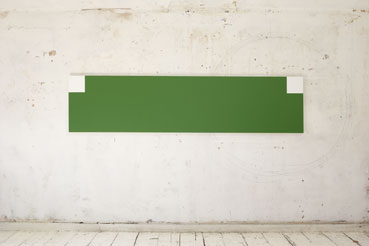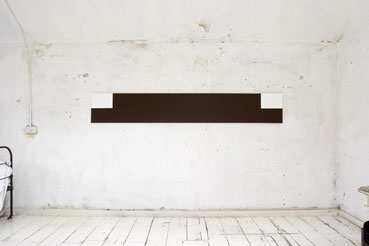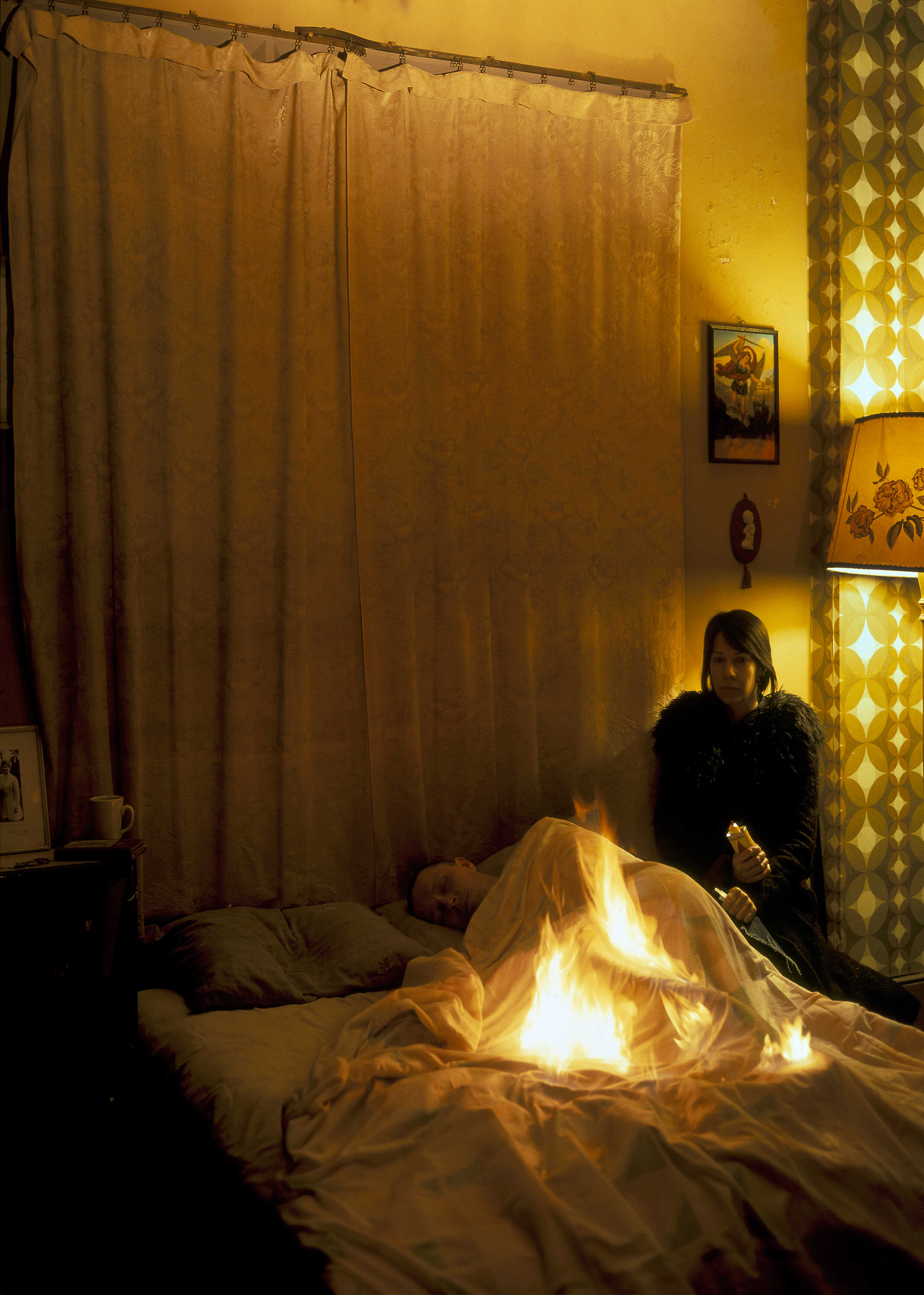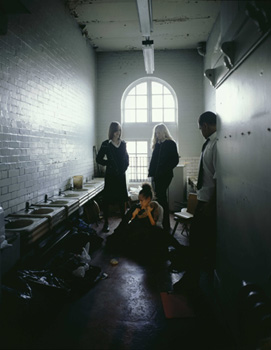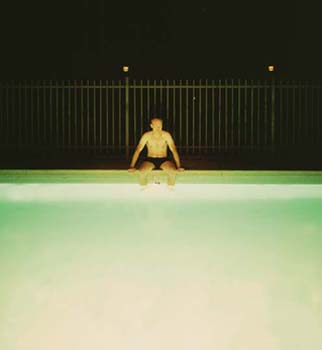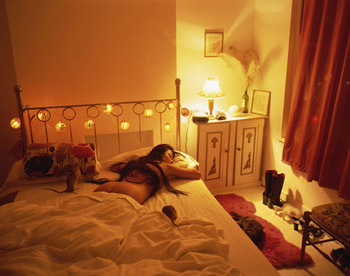The character of Conor Kelly’s video and installation work is informed by his long experience as a musician, composer and sound artist, indeed the current work builds on a series of recent shows in which traditional hierarchies and modalities of the sound-image relationship within the moving image are explored. The tendency to experience video work as primarily visual, something that stems partly from the history of cinema as originally, and hence primarily, visual, is overturned, but, paradoxically perhaps, much of the work achieves this by visually manifesting ideas that arise from sound-based sources.
Pendulum takes off from Steve Reich’s early work Pendulum Music (1968), in which four dangling microphones swing across four upturned loudspeakers, creating first sounds, then melodies and finally a chord. Kelly eschews such musical allegory in favour of the visual drama of the microphone flashing across a loudspeaker whose cone fills the TV screen. Analogies are drawn between the monitor (vision), the loudspeaker (sound) and the microphone (movement). But the monitor also emits sound, and the loudspeaker and the microphone are visual elements in the work. Thus the categories of sound and vision are intermingled, or swopped over: for all that seeing and hearing are distinct modalities with dedicated sense organs, seeing is rarely soundless, and vice versa.
In Note, Kelly builds on an earlier five-monitor installation: Plainsong. “I shall be making some visual decisions based on audio information...there will be a perpetually changing set of loops…so although they are different works, the whole gallery will be on different length loops...each piece will bleed, so to speak, albeit at a low level, visually and aurally”. In other words, the resonant characteristics of a given room, and the way that individual works in a confined space inevitably interfere with each other must be part of the equation. In Plainsong the latter phenomenon was built into the structure of the work. Notes takes the process in a different direction: “mixed for a buzzing cacophony in a heap in the corner”, the piece allows the unsynchronised combinations of the sounds issuing from a quantity of TV sets, and the reinforcing, canceling and muddying reflections of the gallery walls freely to interact. It’s a piece that requires careful aural attention, yet which is none the less visual. It asks a question that Kelly has asked before: what do you look at when you’re listening?
Piano Note, also draws our attention to the visuality of music making: the sheer beauty, exoticism even, of musical instruments. The piano, with its regular pattern of contrasting keys (“ebony and ivory”) is a perfect analogue for the modern musical scale, with its regular, step-like intervals (This regularity masks a long history of “unequal” tunings). The endlessness of the keyboard, implied in its repetitive pattern of keys, is humorously played upon (sic) in Kelly’s piece. (Bosendorfer, a rival to Steinway, and the preferred brand for pianists as diverse as John Ogden and Charlemagne Palestine, make a piano with an additional octave in the bass).
The term Aerophone was coined by two ethnomusicologists, von Hornbostel and Sachs (such musical names!) It refers to one of four methods of generating sound, and would usually be associated with wind instruments. Here, however, it can be taken to mean that all sound ultimately involves the movement of air, regardless of its source mechanism. Air, space, the walls that define it and which reflect sounds in such a way that they can never be the same in two different rooms give this set of works its particular character, which, rarely, is both site-specific and site- productive.
Nicholas Hamlyn 2006
The next exhibition at Green On Red Gallery will be Living in Hell and Other Stories by Tom Hunter (27 April –27 May, 2006). If you require any further information please contact Jerome O Drisceoil, Molly Sullivan or Karen Tierney at:
